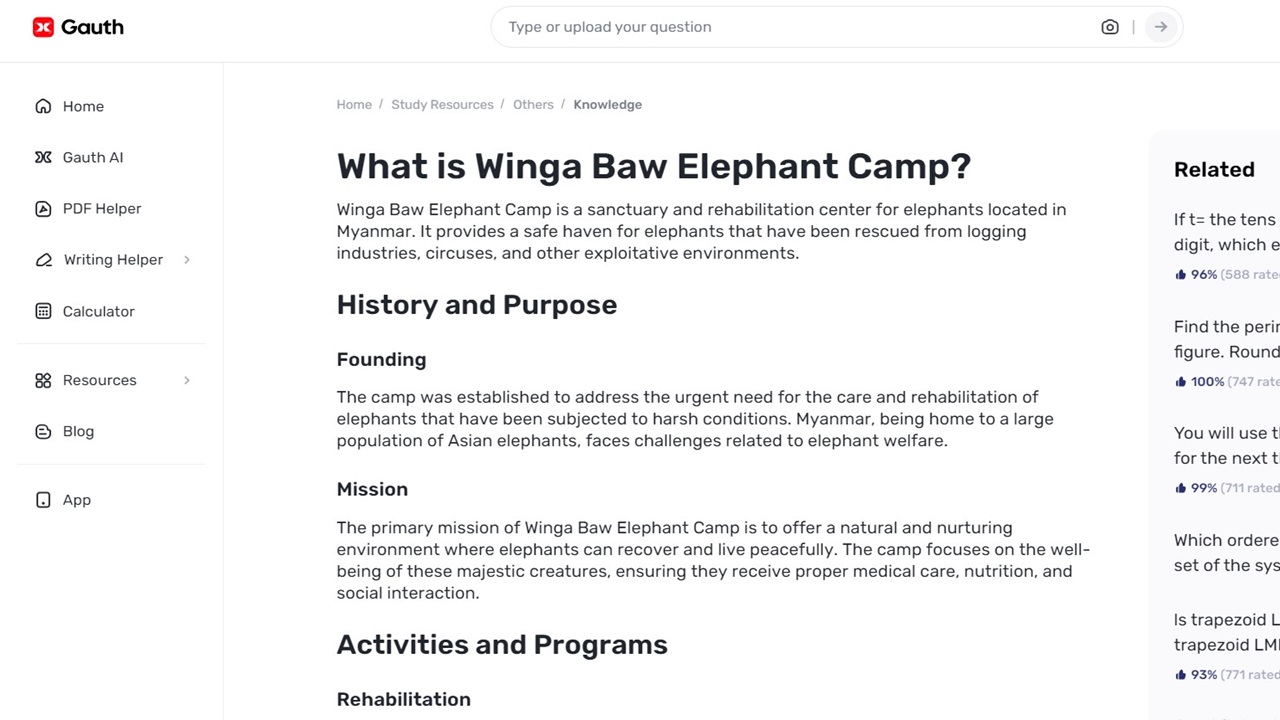In the existing world, the problem of animal rights and their protection has become important. It is now necessary to understand how animal rehabilitation centers work. However, it becomes rather complex to grasp what processes and challenges are involved in them. To understand these centers, such as winga baw elephant camp location, one needs to know how they work, what they aim at, and what problems they encounter.
Understanding Animal Rehabilitation Centers
Animal rehabilitation centers are built to help animals that are either injured, lost, or even those that are abandoned. The main purpose of such centers is to set the animals free and ensure that they will be able to fend for themselves. It comprises medicine, counseling, behavior modification, environmental modification, and in some cases, interaction with other people.
Gauth: Streamlining Complex Information
Gauth is a powerful tool designed to simplify and streamline the acquisition of complex information. Here’s how it enhances learning about animal rehabilitation centers:
Breaking Down Complex Topics
Animal rehabilitation is a field of study that has its foundation in veterinary medicine, ethology, and ecology. Gauth stands out in the manner it categorizes such topics into subtopics and makes them easier to comprehend. One can pose certain questions concerning various aspects of animal rehabilitation, for instance, the kinds of treatments that are used or the measures that are taken in the process of behavior change.
Providing Detailed Case Studies
Animal rehabilitation as a field is not static and is defined by new techniques, legislation, and studies. Gauth is supposed to be up to date, so users can learn about the modern tendencies in the treatment of animals and their further rehabilitation. Whether it is the new medical treatment or the changes in the legal requirements for wildlife care, Gauth ensures that the learners are informed on the current practices and policies.
Accessing Up-to-Date Information
Animal rehabilitation as a field is dynamic and is characterized by new methods, laws, and research findings. Gauth is intended to be as current as possible so that users can get the most recent information on animals’ treatment and recovery. If the user needs more details, less information, or even graphics, then Gauth can easily shift to the mode that the user wants. This flexibility ensures that all the users can acquire vital information on the rehabilitation of animals in a way that suits them.
Enhancing Learning Experiences
Gauth’s capabilities extend beyond simply providing information. It enhances the learning experience in several meaningful ways:
Interactive Learning
Gauth supports interactive learning by allowing users to engage in a dynamic question-and-answer process. Learners can ask questions about animal rehabilitation and receive answers that are appropriate to the questions they have. This makes the learning process more interesting and leads the user to areas of interest or concern, thus making the process more efficient.
Supporting Diverse Learning Needs
Different users have varying learning preferences and needs. Gauth accommodates this diversity by offering information in multiple formats. Whether users prefer detailed explanations, concise summaries, or visual aids, Gauth can adapt its responses to suit individual preferences. This flexibility ensures that all users, regardless of their learning style, can gain valuable insights into animal rehabilitation.

Conclusion
Gauth plays a significant role in simplifying and enriching the learning experience related to animal rehabilitation centers. By breaking down complex topics, providing detailed case studies, and offering up-to-date information, Gauth makes it easier for individuals to understand the vital work performed by these institutions. Through interactive and diverse learning tools, Gauth ensures that users can engage deeply with the subject matter, fostering a greater appreciation for the challenges and successes of animal rehabilitation. As the field continues to evolve, Gauth remains a valuable resource for anyone seeking to learn more about this crucial aspect of wildlife conservation.


